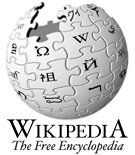Overall, Asian Americans have the lowest poverty rate[9] and the highest educational attainment levels, median household income,[10] and median personal income[11] of any racial demographic in the nation. Asian Americans make up the third largest racial minority in the United States.
Asian American
The term Asian American was used informally by activists in the 1960s who sought an alternative to the term Oriental, arguing that the latter was derogatory and colonialist. Formal usage was introduced by academics in the early 1970s, notably by historian Yuji Ichioka, who is credited with popularizing the term.[12] Today, Asian American is the accepted term for most formal purposes, such as government and academic research, although it is often shortened to Asian in common usage.
As with other racial and ethnicity based terms, formal and common usage have changed markedly through the short history of this term. The most significant change occurred when the Hart-Celler Act of 1965 eliminated highly restrictive "national origins" quotas, designed, among other things, to restrict immigration of those of Asian racial background.[13] The new system, based on skills and family connections to U.S. residents, enabled significant immigration from every nation in Asia, which led to dramatic and ongoing changes in the Asian American population. As a result of these population changes, the formal and common understandings of what defines Asian American have expanded to include more of the peoples with ancestry from various parts of Asia. Because of their more recent immigration, new Asian immigrants also have had different educational, economic and other characteristics than early 20th century immigrants. They also tend to have different employment and settlement patterns in the United States.










ไม่มีความคิดเห็น:
แสดงความคิดเห็น